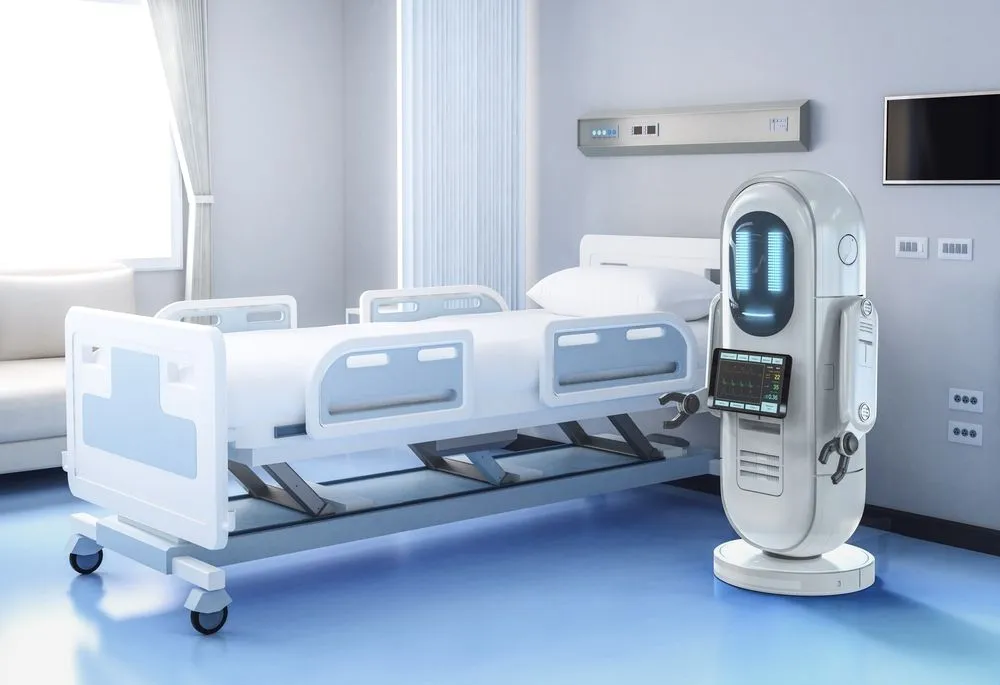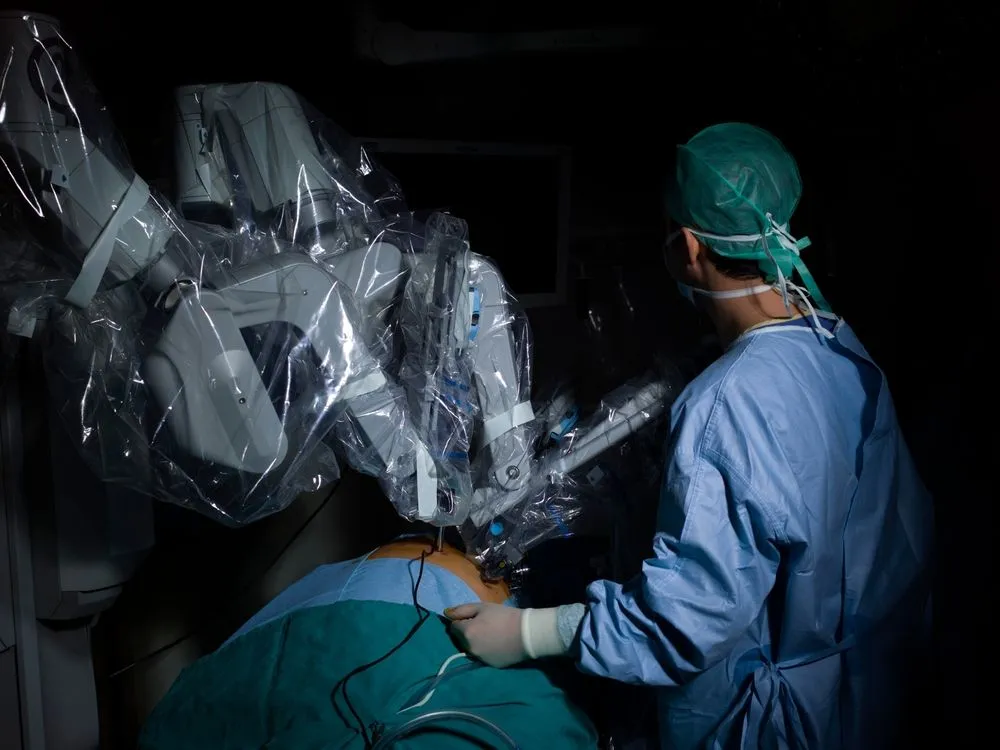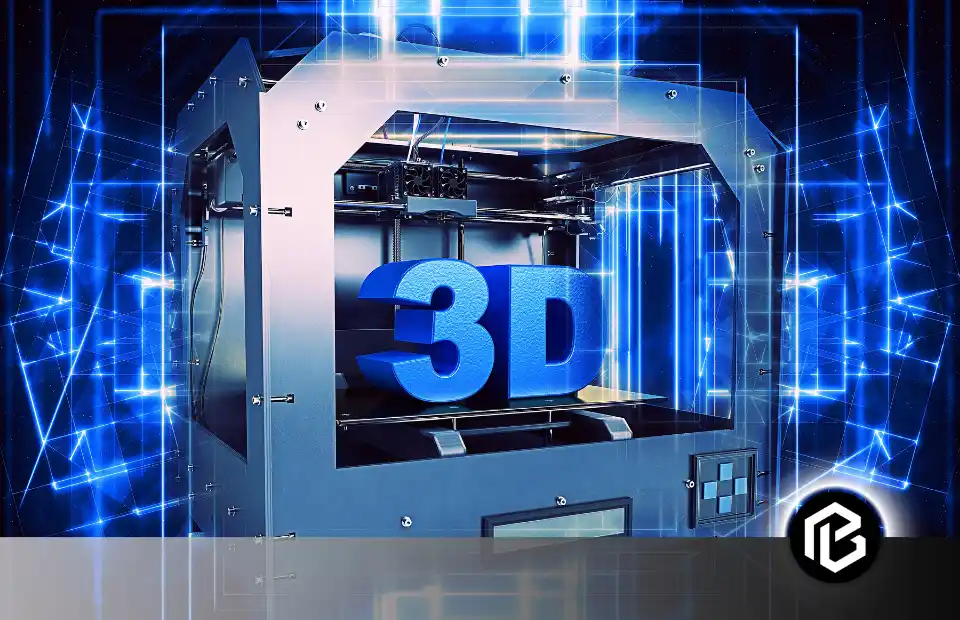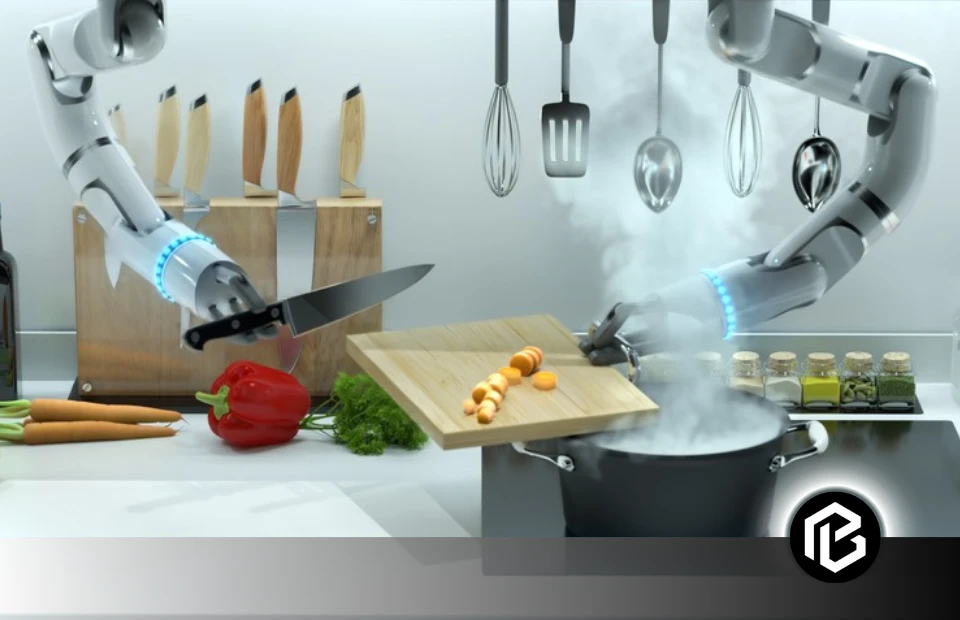Thirty-eight years ago, in 1985, great technologists invented robotic surgery advancements. Hence, the concept of robots performing complex surgeries is no longer limited to movies. Robotic arms operate on various organs, making it easier for surgeons to control the movement and provide a better view of the spot. Robotic Surgical Instruments also go easy on patients by using small incisions.
Robotic surgery advancements like Smaller incisions, Da Vinic Surgical System, Medtronic’s Mazor X, and Verb Surgical. It signals a new age in medical care.
Robotic surgery is an excellent achievement in the field of health care. Still, everyone has a different perspective on it.
- Why Robotic Surgery?
- Do robots perform surgeries on their own?
- Was the First Robotic Surgery a success?
- First Remote-Based Robot Surgery
- 3 Robotic Surgery Advancements Systems
- Applications of the Robotic Surgery
- 1. Robotic kidney surgery
- 2. Robotic prostate surgery
- 3. Robotic colorectal surgery
- 4. Robotic coronary artery bypass
- 5. Robot-assisted cancer surgery
- 6. Robotic cardiac surgery
- 7. Gallbladder removal
- 8. Hysterectomy
- 9. Kidney transplant
- 10. Kidney removal (total or partial)
- 11. Single-site robotic gallbladder surgery
- 12. Head-and-neck surgery
- 13. Joint replacement surgery
- Advantages of the Robotic Surgery Advancements
- Personal Experience in Robotic Surgery
- Conclusion
- Frequently Asked Questions on Robotic Surgery Advancements
Why Robotic Surgery?
With robotic capabilities, surgeons access tight and difficult spots the human wrist cannot reach. Robotic surgery can be helpful for challenging surgeries like:
- Complex Tumor Removal Surgeries
- Organ transplants
- Gallstone surgeries
Do robots perform surgeries on their own?
Most people doubt or might not trust robots performing surgeries on their own. But relax, guys! The answer is No, as the surgeon is the master controlling and guiding the robotic system very precisely.
The surgeon can control the robotic system by multiple technologies. Some of these are:
- A press with joy sticks for the control
- Bedside robotics arms with tools to operate.
- 3D vision system for imaging and navigating.

Was the First Robotic Surgery a success?
The First Robotic Surgery was held successfully in 1985 by Dr. P. Hunter Peckham. He used a Robotic Arm called “PUMA 560” for the brain biopsy procedure. Unimation, a great neurosurgical robotic company, developed this arm. Robotic surgery was born from this pioneering surgery, which has the foundation for developing more advanced robotic surgical systems.
“The robotic arms can turn, pivot, roll—they can do everything your hands can.”
Says Craig Rogers, M.D.,
First Remote-Based Robot Surgery
There are a lot of exciting questions that have been raised by the use of robots in medical surgery.
One of them was remotely controlled robotic surgery. Surgeons and technologists remain working on the possibilities for remote-based surgeries, which came true in 2001. Dr. Jacques Marescaux performed the first remote robotic surgery using the da Vinci Surgical System. The patient was in Strasbourg, France, and Dr. Marescaux controlled the robotic arms from New York City, USA.
This was also an embraceable achievement. Since then, surgical robotics have advanced, enabling surgeons to perform complex surgeries with enhanced precision and skill.
3 Robotic Surgery Advancements Systems
Three major systems are being used around the globe for robotic surgeries. These systems help the patient recover fast and are less painful.
1 – da Vinci Surgical System
The da Vinci Surgical System is used for various surgical procedures across different medical specialities due to its advantages in providing minimally invasive surgery and enhanced precision.
2 – Medtronic’s Mazor X
Medtronic’s Mazor X is a robotic surgical guidance system designed to assist surgeons in performing spinal surgeries with high precision and accuracy.
3 – Verb Surgical
Verb Surgical is a collaboration between Google and Johnson & Johnson, aiming to develop a next-generation robotic surgery platform. These systems have revolutionized the field of surgery by improving patient outcomes and reducing recovery time.

Applications of the Robotic Surgery
1. Robotic kidney surgery
Robotic surgeries can filter and remove kidney stones through minute incisions, eliminating the need for open surgery and lowering the risks of complications and infection.
2. Robotic prostate surgery
Compared to traditional procedures, robotic surgeries for prostate cancer frequently result in improved preservation of sexual and urinary function, enhancing patients’ quality of life after surgery.
3. Robotic colorectal surgery
With the guidance of wristed devices and 3D imagery provided by robotic platforms, surgeons may more precisely negotiate the tricky bends and turns of the colon and rectum, appropriately lowering the risk of issues.
4. Robotic coronary artery bypass
Robotic coronary artery bypass surgery, also often known as “off-pump” surgery, can sometimes be carried out without stopping the heart, reducing the chance of complications following the procedure.
5. Robot-assisted cancer surgery
Because they can reach out-of-place places like the pelvis or the bottom of the skull, robotic systems help remove malignancies from delicate anatomical structures.
6. Robotic cardiac surgery
Robotic heart surgery enables remote tele-surgery capabilities, improving access to specialist treatment by allowing skilled surgeons to conduct operations on patients far from their physical location.

7. Gallbladder removal
One small opening is made through the navel during robotic single-site gallbladder surgery, leaving almost no visible scarring and a discrete cosmetic look.
8. Hysterectomy
Robotic-assisted hysterectomy provides superior pelvic manoeuvrability, making it appropriate for challenging cases such as big fibroids or endometriosis, where accuracy is essential.
9. Kidney transplant
Robotic kidney transplantation can be done with smaller stitches, potentially lowering postoperative pain and allowing living donors to make less invasive contributions.
10. Kidney removal (total or partial)
Robotic nephrectomy enables the specific and minimally painful removal of a kidney, which is significant for individuals giving a kidney to a loved one or for their transplantation.
11. Single-site robotic gallbladder surgery
Single-site robotic surgery offers a professionally appealing and minimally invasive alternative by combining the advantages of robotic surgery with a single, minor incision in the patient’s belly button.
12. Head-and-neck surgery
Robotic devices assist in sensitive head-and-neck surgery processes, assuring minimal harm to nearby tissues, including nerves and blood vessels, increasing patient outcomes and healing.
13. Joint replacement surgery
Though less frequent than other uses, robotic aid in joint replacement surgery enables precise implant positioning, extending the life of the joint restoration and enhancing long-term function.
Advantages of the Robotic Surgery Advancements
- Enhanced Precision: Robotic surgical systems provide a high level of precision, allowing surgeons to make precise movements with greater accuracy than human hands. This is particularly beneficial in delicate and intricate surgeries.
- Improved Visualization: Robotic systems typically include high-definition 3D cameras that provide a detailed and magnified view of the surgical site. This enhanced visualization helps surgeons see fine details and better navigate complex anatomy.
- Minimally Invasive: Most robotic surgeries are minimally invasive, involving small incisions. This results in less trauma to the patient’s body, reduced scarring, and a faster recovery than traditional open surgeries.
- Reduced Pain and Discomfort: Minimally invasive robotic surgeries often lead to less postoperative pain and discomfort, allowing patients to recover more comfortably.
- Shorter Hospital Stays: Robotic surgery can lead to shorter hospital stays because of the minimally invasive approach and quicker recovery times. Patients can often return home more quickly than staying there for days, which helps in reducing healthcare costs.
- Quicker Recovery: Patients undergoing robotic surgeries typically experience faster recovery and can start normal activities sooner than open surgery.
- Reduced Blood Loss: The precision of robotic instruments can minimize blood loss during surgery, which is especially important in specific procedures.
- Lower Infection Risk: Smaller incisions and a reduced risk of contamination can lower the risk of surgical site infections.
- Less Scarring: The small incisions used in robotic surgery result in more minor, less noticeable scars, which can be cosmetically appealing to patients.

- Complex Procedures: Robotic surgery benefits complex and challenging procedures, such as prostatectomy, cardiac surgery, and intricate gynaecological surgeries.
- Reduced Surgeon Fatigue: The ergonomic design of robotic consoles can reduce surgeon fatigue during long and complex surgeries, allowing for more precise and steady movements.
- Remote Surgery: In some cases, robotic systems can enable remote surgery, where a surgeon can operate on a patient at a different location. This can be valuable for providing specialized care to remote or underserved areas.
- Data Collection and Analysis: Robotic surgical systems often collect data during procedures, which can be used for analysis and research to improve surgical techniques and outcomes.
Personal Experience in Robotic Surgery
Dennis L. Fowler, MD, MPH, a Director at the Center for Innovation and Outcomes Research at Columbia University, is a general surgeon who mostly does operations in the abdomen. He is in this field and has been working in it for years. He has shared his personal experience with robotics surgery and its advancements. Some of the opinions are discussed below.

Surgical Specialties that Can Benefit from Robotic Surgery
Dennis L. Fowler, MD, MPH, a Director at the Center for Innovation and Outcomes Research at Columbia University, is a general surgeon who mostly does operations in the abdomen, that’s been his focus said: “Surgical robots can be beneficial for any surgery requiring an outstanding level of mastery or require a big incision or a painful incision for access. But surgical robots for brain surgery, spine surgery, or joint surgery are all available or developed by various companies worldwide.”
Moreover, he discussed the issue of the ability to bring artificial intelligence to partner with human surgeons to make surgery safer, more reproducible, and have more predictable outcomes. They believe that robotic technology, in the concept of bringing artificial intelligence to a good hardware platform, can deliver that for most types of surgery, including brain surgery, heart surgery, and joint surgery.
Patients Concerned with the Safety of Robotic Surgery
There’s a great deal of confidence that a patient puts in a human surgeon if they’ve come to know that surgeon, learn of the surgeon’s reputation, and the surgeon’s outcomes. It’s a significant paradigm shift to think that a machine would be given that kind of trust, but it already is happening in various life-preserving industries such as
- Nuclear power plants
- Jet aeroplanes that we get in all the time.
- Computers can already fly planes without pilot assistance.

A 777 jet can fly from Los Angeles to Paris without a human pilot. It’s safer, and it’s proven that that’s safer. Now, surgery is not the same as flying an aeroplane through the air. Still, many experts believe that inserting a computer with software and the appropriate electronic connection between the surgeon’s hands and the tools can make the surgery safer.
Will Robots ever take over the Surgical Process Completely?
According to experts, it is technologically possible that computers can independently do operations in the future. There is little doubt that computational capabilities will enable that. We’re still there and probably will be there for several years or even decades. But as we develop this, there will be increasing rapidity of the development of this such that we create partnerships between robots and human surgeons.
Future of Robotic Surgery Advancements
Experts say computers will eventually enable surgeries to be entirely performed by robots.
- These advances are years or decades in the future.
- However, advances are constantly being made at an accelerated rate.
- This will soon lead to human-robot partnerships during surgery.

Conclusion
Ultimately, there will be a shared responsibility for the safe performance of the operation, whether it’s done mainly by the robot or primarily by the human surgeon. Partnering with a robotic with central artificial intelligence and computational capabilities will make the surgery safer. Since its inception in 1985, robotic surgery has advanced significantly. Robots are our good friends! Without a doubt, personalized home care robots for the elderly serve as modern-day heroes for our loved elders.
Frequently Asked Questions on Robotic Surgery Advancements
How does robotic surgery advancements affect healthcare?
Surgical robotics impacts healthcare by increasing access to particular operations, lowering challenges, and enhancing patient outcomes.
What are the three advantages of robotic surgery?
- Greater accuracy
- Smaller incisions
- lower infection risk
What is the future of robotic surgery advancements?
With even more complex AI integration, telehealth applications, and greater surgical robots shrinking, the future of robotic surgery is bright.





